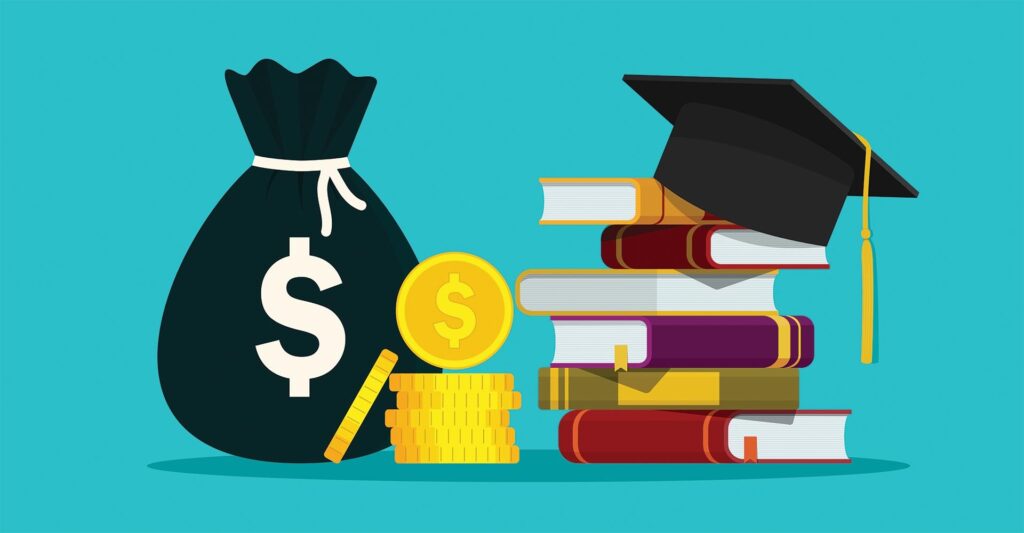Taking out a student loan is a big decision. There are a lot of things to consider before you apply for a loan, such as the type of loan you need, how you will repay the loan, and the pros and cons of taking out a loan. This article will provide everything you need to know about student loans so that you can make an informed decision about whether or not taking out a loan is right for you.
The different types of student-loans
There are two main types of student-loans:
federal student-loans and
private student-loans.
Federal student-loans are loans provided by the US government and have many benefits, such as fixed interest rates and income-driven repayment plans. Private student-loans are provided by banks and other financial institutions. They typically have variable interest rates and fewer repayment options.

There are also PLUS loans, which are federal loans that parents can take out to help pay for their child’s education. Lastly, there are consolidation loans, which allow you to combine multiple student-loans into one loan with a single monthly payment.
Each type of loan has its own pros and cons, so it’s important to research all of your options before you decide which loan is right for you. You should also consider how you will repay the loan before you take it out.
Federal student-loans typically have lower interest rates than private student-loans, so they may be a better option if you’re able to qualify for them. Federal student-loans also offer income-driven repayment plans, which can make your monthly payments more affordable if you’re struggling to make ends meet. However, private student-loans may be a better option if you need flexibility in repayment terms or if you don’t qualify for federal aid.
When you’re ready to apply for a loan, you’ll need to fill out the Free Application for Federal Student Aid (FAFSA). The FAFSA is used to determine your eligibility for federal aid, including grants, work-study programs, and federal student-loans.
If you’re taking out a private loan, you’ll need to apply directly with the lender. Be sure to compare multiple lenders before choosing one, as interest rates and terms can vary significantly from one lender to another. Once you’ve chosen a lender, you’ll need to complete an application and provide documentation of your income and expenses.
Once you’ve been approved for a loan, you’ll need to begin making payments on it. Most federal student-loans have a grace period of six months after graduation before payments are due, but this isn’t the case for all types of federal Loans or all private lenders – so be sure to check with your lender about when payments are due. You can usually choose from several repayment plans depending on your budget and needs – so be sure to pick the one that’s right for you!
How to apply for student-loans
The process for applying for student-loans depends on the type of loan you are seeking. For federal student-loans, you will need to fill out the Free Application for Federal Student Aid (FAFSA) form. The FAFSA form is used to determine your eligibility for need-based aid, such as grants and federal student-loans.
To complete the FAFSA form, you will need to provide information about your family’s financial situation, as well as your own income and assets. You will also need to provide information about your school’s cost of attendance and your enrollment status. Once you have completed the FAFSA form, you will receive a Student Aid Report (SAR). The SAR will provide information on your expected family contribution (EFC), which is used to determine your eligibility for need-based aid.
For private student-loans, the application process will vary depending on the lender. Some lenders may require that you complete a FAFSA form, while others may not. You will typically need to provide information about your income, assets, and debts, as well as your school’s cost of attendance and enrollment status. Once you have completed the application process, the lender will review your information and make a decision on whether or not to approve your loan.
It is important to note that taking out a student loan should be a last resort option. You should only consider taking out a loan if you have exhausted all other options, such as scholarships, grants, and savings. Before taking out a loan, you should also consider whether or not you will be able to repay the loan after graduation.
The pros and cons of taking out a student loan
There are both pros and cons to taking out a student loan. On one hand, student-loans can have lower interest rates than other types of loans. Additionally, student-loans can be used for a variety of educational expenses, such as tuition, room and board, books and supplies, and transportation costs. On the other hand, you will be responsible for repaying your student loan, with interest, after you graduate or leave school. There are several repayment options available for student-loans, including income-driven repayment plans and extended repayment plans. You should carefully consider all of your options before taking out a student loan.
How to repay your student loan
There are various repayment plans available for student loans, so you should choose the one that best suits your needs. The most common repayment plan is the standard repayment plan, which requires you to make fixed monthly payments for 10 years. Other repayment plans include the income-based repayment plan, the graduated repayment plan, and the extended repayment plan. You can also consolidate your loans, which allows you to combine multiple student-loans into one loan with a single monthly payment. If you are having trouble making your payments, you may be eligible for deferment or forbearance. Lastly, if you default on your student loan, there are serious consequences, such as wage garnishment and damage to your credit score.

The best way to repay your student-loans is to start making payments as soon as possible. By making early payments, you can save money on interest and reduce the overall amount of money you need to repay. You should also consider consolidation if you have multiple student loans. Consolidation can simplify the repayment process and lower your monthly payments. If you are having trouble making your payments, deferment or forbearance may be an option for you. However, defaulting on your loan can have serious consequences, so it is important to try other options first.
The process of taking out and repaying student loans can be daunting, but it doesn’t have to be. By doing your research and understanding all of your options, you can make the best decision for your individual situation. And, by making payments on time and in full, you can avoid default and the serious consequences that come with it.